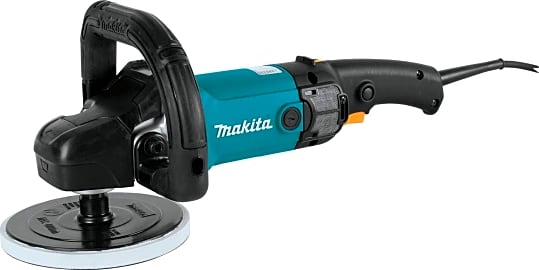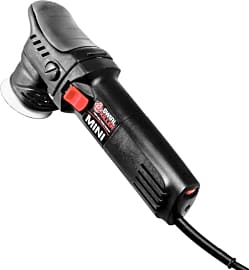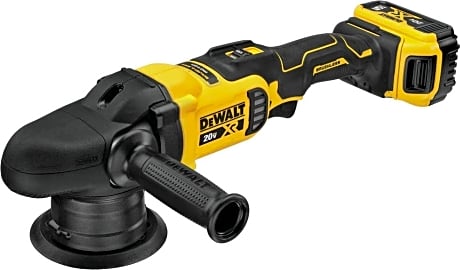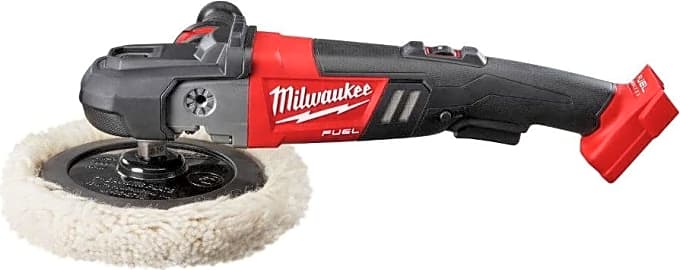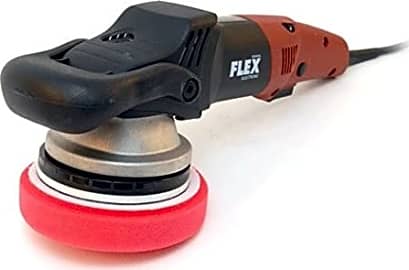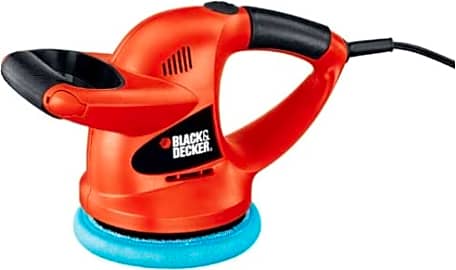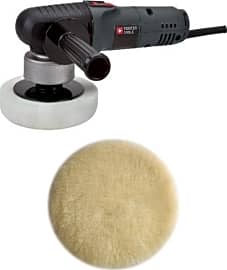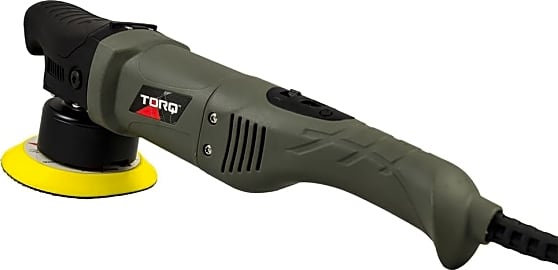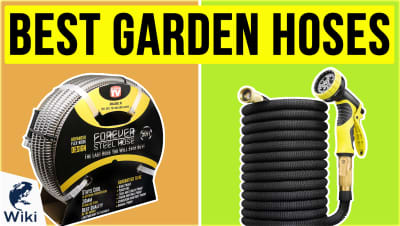The 10 Best Car Buffers

This wiki has been updated 29 times since it was first published in March of 2018. When it comes to working polish into extremely thick and delicate clear coats, doing so effectively by hand over a large area can become quite labor-intensive and time-consuming. As a solution to this problem, you can save both time and energy while ensuring defect-free finishes to the surfaces of almost any automobile using one of these corded or battery-operated car buffers. When users buy our independently chosen editorial picks, we may earn commissions to help fund the Wiki.
Editor's Notes
November 12, 2020:
We've kept the same trend going in terms of including models capable of handling heavy loads and working with hard clear coats without wasting polishing products.
The Griot's Random Orbital Polisher has been removed due to availability concerns. Newly added is the DeWalt DCM848P2. Although it's a bit on the pricey side, its brushless motor improves efficiency, while the rubber gear case overmold makes it easy to hold. This one also has a side-mounted battery pack, which definitely comes in handy when polishing around wheel wells and other tight spots on a vehicle's surface.
Expanding on what we said last year about the Flex XC3401VRG, not only does its direct orbital drive serve to prevent excess heat from transferring onto a car's surface, but it also comes with integrated overload protection and temperature monitoring functions.
The budget-friendly Black & Decker WP900 offers a top operating speed of 4,400 random orbits per minute and it also includes two handle grips for added control and stability, regardless of the working angle.
May 16, 2019:
Considering that a majority of cars have relatively large surface areas with a lot of nooks and crannies to work on, polishing vehicles by hand is not the most effective way to ensure a defect-free finish. Unlike many of the older single-stage lacquer and urethane paints, modern automobile paints often have very hard and delicate clear coat finishes that require greater efficiency and more "automated care". That said, I tried to focus on including buffers capable of handling heavy loads, while mimicking natural hand movements in an effort to remove scratches, swirls, holograms, and other imperfections without the risk of user fatigue or wasted polishing products.
I added the Griot's Random Orbital Polisher for its long 25-foot power cord, 6 speed settings, and hook-and-loop backing plate. The pad and plate on the Adam's Swirl Killer Mini is capable of oscillating in multiple directions, allowing the device to mimic the irregular rotational patterns common with conventional hand polishing. The soft start feature on both the Rupes Big Foot and Makita 9237C allow for controlled power increases, making them both ideal for precision buffing jobs. I also maintained the Milwaukee M18 as one of the available cordless options. Its removable dust cover also protects its components from being clogged by the wool fibers of its pad. Also kept the DeWalt DWP849X for its durable ball bearing construction and 12-amp motor. Maintained the Torq 10FX for its integrated vibration reduction technology. I also thought that the Flex XC3401VRG was still a viable option, thanks to its direct orbital drive for preventing the transfer of excess heat, making it particularly useful when polishing fancy cars with temperature-sensitive finishes. Finally, I maintained the Porter-Cable 7424XP due to its random-orbit operation for use as both a polisher and sander.
Special Honors
Mirka MKAROP312-B The Mirka MKAROP312-B is a cordless random orbital polisher equipped with a powerful brushless motor with a top speed of 7,000 revolutions per minute, variable speed trigger, 77-millimeter backing pad, and a 12-millimeter orbit. Its integrated Bluetooth connectivity (courtesy of the companion mobile app) offers access to additional features, including vibration measurement, RPM range management, and control over its auto-stop function. mirka-online.com
Fein WPO The Fein WPO is a high-performance angle polisher with a 1,200-watt power output, no load speed of up to 1,500 revolutions per minute, and mechanical gear reduction that ensures operating stability at any load speed, making this one ideal for professional surface treatments on both vehicles and boats. In addition to its self-start and spindle locks, the extraction hood and backing pad can be used to quickly convert it to a rotary sander. fein.com
A Brief History Of Auto Detailing
The first step towards auto detailing happened way back in the first part of the 19th century.
If there's one thing that's remained constant throughout all of human history, it's that other people will judge you based on your ride — that's why you never see any paintings of ancient royalty mounted on ugly horses.
The first step towards auto detailing happened way back in the first part of the 19th century. A German carriage maker developed a wax made from animal fats that was capable of protecting the black paint that was slathered on horse-drawn carriages. This would be the precursor to the auto wax we still use today.
The first Ford Model Ts were all painted with the same kind of lacquer that carriages used to be covered with, although by this time, the original wax had fallen out of popular consciousness.
In the 1930s, a wax was produced in Zurich by a man named Hans Anwander, which was designed to protect and restore antiques. An unexpected benefit to the wax that Anwander soon discovered was that it could also be applied to car paint. His wax, with a little tinkering, still comes standard issue in the trunks of Rolls-Royce cars today.
A version of this wax was brought to America shortly thereafter, where it was distributed by the Turtle Wax Company (no actual turtles were harmed in the making of the wax).
The 1950s brought what would eventually be a new innovation to the auto detailing game: the Cyclo machine. This was a twin-head orbital polisher originally designed for the aerospace industry (because you can't let aliens see you roll up in a dusty old space shuttle).
By the end of the 1960s, several new breakthroughs were achieved. DuPont released a polymer sealant, and both Japanese and European manufacturers introduced clear-coat paint, allowing car buffs to create an incredible gloss and long-lasting color.
Detailing clay, two-stage paints, and non-degrading clear coats all hit the scene in the years to come, and today's products use advanced nanotechnology polymers. With a modern focus on eco-friendly products, green auto care looks to be here to stay.
How To Give Your Car The Best Bath Ever
While getting your car professionally washed can certainly save you time, there are compelling reasons why you should do it yourself, including the mistreatment of workers and use of practices that are potentially harmful to the environment.
Start at the top of the vehicle and work your way down, scrubbing in small, tight circles.
But how do you give your jalopy the same shine it would get at the place around the corner? The first thing you need to do is get all your gear ready. Don't use soaps or cleaners from around the house, as anything other than a dedicated car wash product can strip off your car's protective wax. Read the labels on everything before you use them, as some products that work well on one surface may damage another.
Don't wash your car immediately after driving it, as the generated heat will speed up the drying process and increase the chances of deposits forming on the paint. Instead, start by quickly rinsing the vehicle, taking care to knock off any caked-on mud or other visible dirt and debris. A pressure washer is ideal for this, but a regular garden hose can also work in a pinch.
Additionally, there are several pre-wash products available to remove grime, traffic film, and other undesirable substances. Simply spray these on, let them sit, and rinse them off. They're effective, but not essential, so it's up to you whether to splurge on them.
Now it's time to start scrubbing. You'll need two buckets, one with shampoo and one with rinse water, and you can either use a sponge or mitts. Start at the top of the vehicle and work your way down, scrubbing in small, tight circles. Take time to rinse off your sponge frequently.
Once you're done, you can give the car another quick rinse with the hose, then dry it off with a microfiber cloth or chamois. Then, put whatever polish or other compound you're using directly on the car, using your buffer to spread it around evenly in small circular motions. Doing this once a year is usually adequate.
How To Keep Your Car Looking Brand New
Washing a car is hard work, so the last thing you want to happen is for all that effort to be immediately undone the first time you drive anywhere. Below are some easy ways to keep it looking fabulous — without having to leave it in a garage year-round.
Get a plastic box or something to store all your essentials, like tissues and grocery bags so that they don't make a mess.
The most effective way is to leave the car covered when you're not behind the wheel. Whether you decide to use covered parking or buy a dedicated cover is up to you, but birds can't poop through solid surfaces.
Be careful of when and where you drive the vehicle. If it has rained recently, you're better off taking another vehicle or calling an Uber than driving your precious wheels through a mud puddle. Likewise, try to leave it at home (or covered) on windy days.
Don't forget the inside, either. Wipe off your shoes before you get in, and keep some sort of receptacle inside for trash. Get a plastic box or something to store all your essentials, like tissues and grocery bags so that they don't make a mess.



